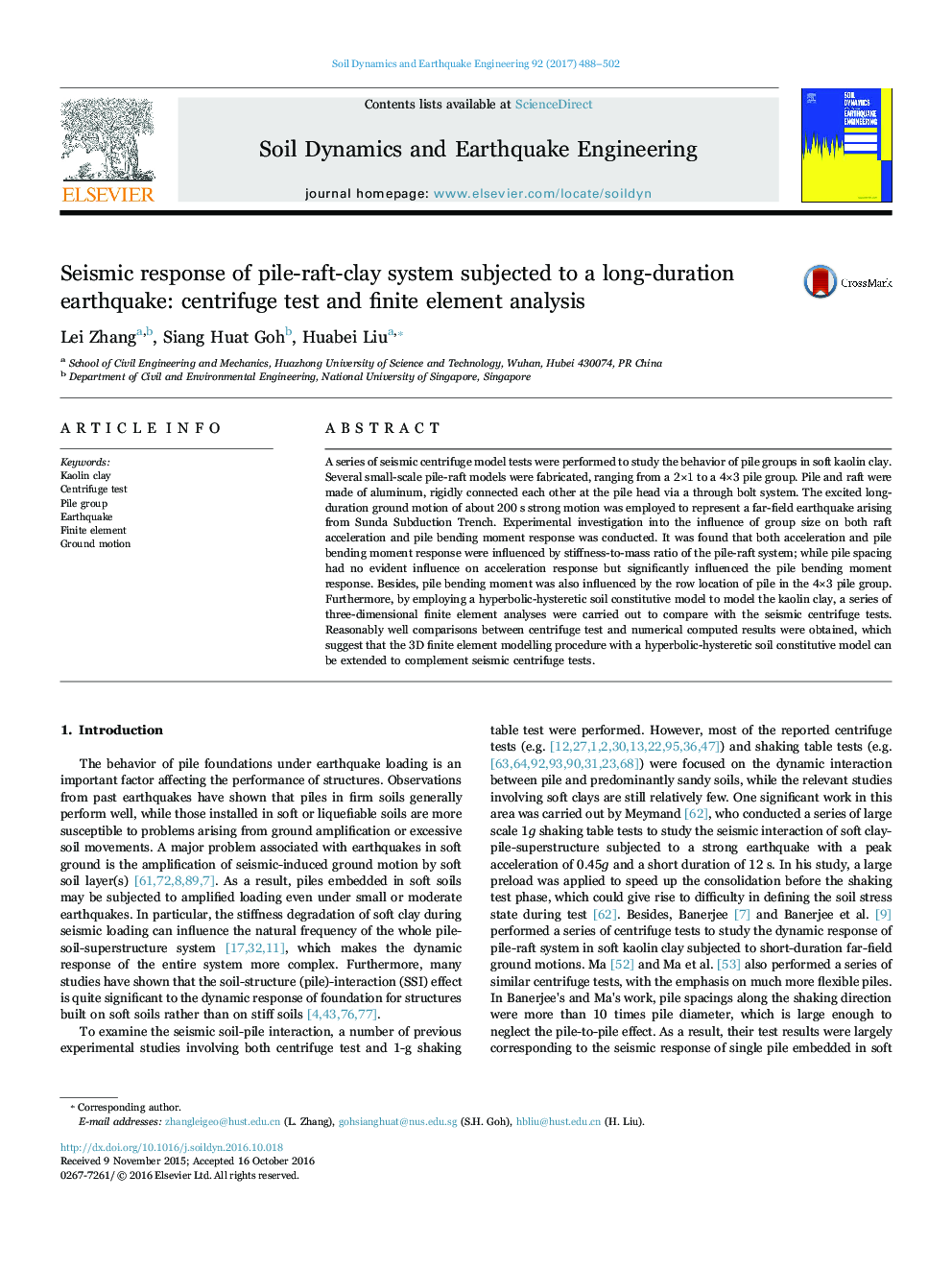| Article ID | Journal | Published Year | Pages | File Type |
|---|---|---|---|---|
| 4927186 | Soil Dynamics and Earthquake Engineering | 2017 | 15 Pages |
Abstract
A series of seismic centrifuge model tests were performed to study the behavior of pile groups in soft kaolin clay. Several small-scale pile-raft models were fabricated, ranging from a 2Ã1 to a 4Ã3 pile group. Pile and raft were made of aluminum, rigidly connected each other at the pile head via a through bolt system. The excited long-duration ground motion of about 200Â s strong motion was employed to represent a far-field earthquake arising from Sunda Subduction Trench. Experimental investigation into the influence of group size on both raft acceleration and pile bending moment response was conducted. It was found that both acceleration and pile bending moment response were influenced by stiffness-to-mass ratio of the pile-raft system; while pile spacing had no evident influence on acceleration response but significantly influenced the pile bending moment response. Besides, pile bending moment was also influenced by the row location of pile in the 4Ã3 pile group. Furthermore, by employing a hyperbolic-hysteretic soil constitutive model to model the kaolin clay, a series of three-dimensional finite element analyses were carried out to compare with the seismic centrifuge tests. Reasonably well comparisons between centrifuge test and numerical computed results were obtained, which suggest that the 3D finite element modelling procedure with a hyperbolic-hysteretic soil constitutive model can be extended to complement seismic centrifuge tests.
Related Topics
Physical Sciences and Engineering
Earth and Planetary Sciences
Geotechnical Engineering and Engineering Geology
Authors
Lei Zhang, Siang Huat Goh, Huabei Liu,
